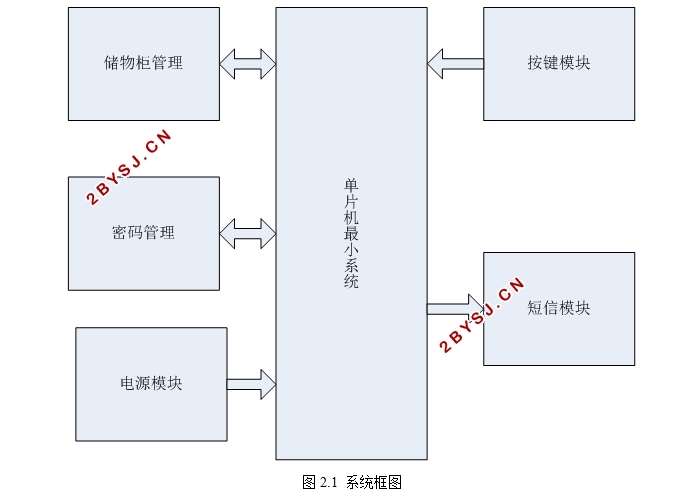智能储物柜的设计
无需注册登录,支付后按照提示操作即可获取该资料.
智能储物柜的设计(任务书,开题报告,论文10000字)
摘 要
近年来随着物流业的飞速发展,对物流的派送速度以及服务效率的要求也越来越高,传统的模式以及不能满足需求,因此智能储物柜的研究具有一定的市场应用价值。
本文首先对系统的设计背景和发展趋势以及现有的技术环境进行了综述,并给出系统框架,探讨各个模块的技术方案选择。本文设计的系统中,通过单片机STC89C52判断矩阵键盘的功能按键A按下或功能按键B被按下,若是A键,系统将选出可用的空闲储物柜,通过SIM900模块发送密码给收件人,完成存入操作;若是B键,系统将等待密码的输入完成,在矩阵键盘上输入密码后,系统将对密码进行逐一对比,若是正确则系统将打开与该密码相对应的储物柜,完成取出操作。本文详细阐述了系统的软硬件设计过程,并总结了调试过程中的问题。
测试表明,本文设计系统达到本次设计对各个模块的相应要求。
关键词:STC89C52 SIM900A 矩阵键盘
The design of intelligent lockers
ABSTRACT
In recent years, with the rapid development of the logistics industry, the logistics of the delivery speed and service efficiency requirements are also getting higher and higher, as well as the traditional model can not meet the demand, a market research intelligent lockers value.
Firstly, the background of the design and system development trends and existing technology environment were reviewed, and gives the system framework to discuss technical solutions to select each module. This design of the system, through the microcontroller STC89C52 judgment matrix keyboard function keys A function key is pressed or B is pressed. A key will be selected if the system available free lockers, sending the password to the recipient through a SIM900 module, complete the deposit operation. If the B button the system will wait to enter a password to complete, enter the password on the matrix keyboard, the system password will be individually contrast, if correct, the system will open the corresponding password Locker complete unloading operation.This paper describes the software and hardware design of the system, and summarizes the problems in the process of debugging.
Tests show that the system is designed to achieve the appropriate requirements of this design for each module.
Key words:A matrix keyboard,STC89C52,SIM900A

目 录
摘 要 I
ABSTRACT II
第一章 绪 论 1
1.1 引言 1
1.2 智能储物柜的发展及趋势 1
1.3 本论文的设计任务 2
1.4 论文结构 2
第二章 智能储物柜的总体设计 3
2.1 系统总体框架 3
2.2 主要功能模块方案选择 4
2.2.1 主控芯片的选择 4
2.2.2 按键模块选择 5
2.2.3 短信模块选择 5
第三章 智能储物柜的系统硬件设计 6
3.1 最小系统电路的设计 6
3.2 外围电路设计 8
3.2.1 按键电路的设计 8
3.2.2 储物柜管理的模拟电路 9
3.3 串口电路的设计 10
第四章 智能储物柜的系统软件设计 13
4.1 系统总体软件流程 13
4.2 储物柜管理程序 14
4.2.1 存入管理流程 14
4.2.2 取出管理流程 16
4.3 按键输入程序 18
4.3.1 矩阵键盘扫描程序 18
4.3.2 密码输入函数程序 21
4.4 短信发送程序 22
4.4.1 AT指令集 22
4.4.2 串口数据发送 22
4.4.3 短消息设置 23
第五章 系统调试 24
5.1 软件调试 24
5.2 Sim900a模块调试 25
第六章 总结 26
参考文献 27
